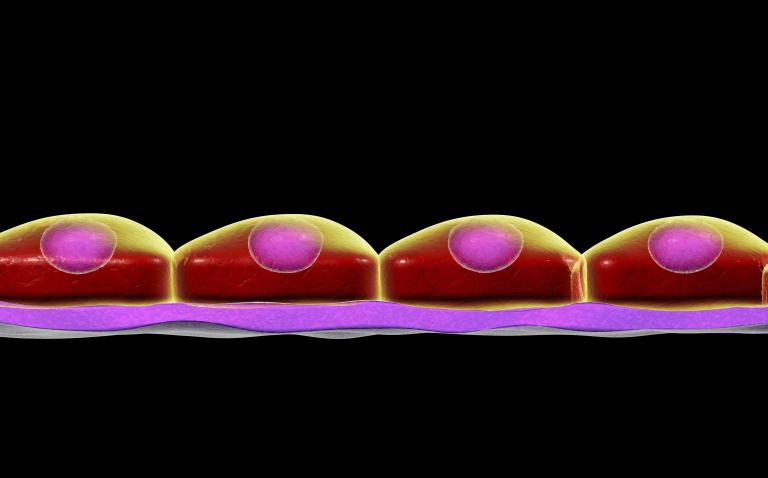A research team at the Medical University of South Carolina (MUSC) has shown that the enzyme responsible for nitric oxide production stops working properly when exposed to serum from lupus patients. They also showed that its ability to produce nitric oxide can be restored by administration of L-sepiapterin. Their findings are published in an article published ahead of print in Lupus Science & Medicine.1
The article provides proof of concept that the enzyme could be a therapeutic target for heart disease in lupus. Restoring the enzyme’s function could also help protect lupus patients against kidney disease. The same inflammatory forces are at work there but the damage occurs much more quickly.
The findings also suggest that restoring the protective function of endothelial cells could be a strategy for treating heart disease more broadly.
“Our study demonstrates that therapies directed towards restoring the function of the enzyme that makes nitric oxide might be effective in restoring the function of the endothelium,” explains Jim C Oates, MD, senior author on the article and Director of the Division of Rheumatology & Immunology and vice chair for research at MUSC.
“So it’s a proof of concept that allows us to move forward in studying the enzyme, nitric oxide synthase, or restoring its function as a target for vascular disease in lupus,” continues Oates.
“This is a first step in a long process of trying to identify therapeutics that might be useful for preventing this accelerated phenotype of cardiovascular disease in lupus patients,” says Joy Buie, PhD. MSCR, a postdoctoral fellow at MUSC and the first author on the article.
For the study, the team collected serum samples from a cohort of African American patients, specifically Gullah patients, with lupus who have been followed since 2003. The South Carolina Clinical & Translational Research Institute at MUSC helped the research team collect study samples from control volunteers, process study samples from both study patients and control volunteers, and securely store collected data.
The MUSC team showed that exposing endothelial cells to serum from patients with lupus caused endothelial nitric oxide synthase to stop working properly. Instead of producing the protective nitric oxide, it began producing superoxide, which promoted damaging inflammation.
In essence, the enzyme lost its power to protect against heart disease and instead promoted conditions that could lead to it. A co-factor needed for the proper function of the enzyme had been rendered unusable by exposure of the endothelial cells to the serum of lupus patients.
Administering L-sepiapterin to the cells restored the enzyme’s ability to produce nitric oxide by providing a new and more reliable source of that co-factor.
Reference
- Jones Buie JN et al. L-sepiapterin restores SLE serum-induced markers of endothelial function in endothelial cells. Lupus Sci Med 2019;6(1):e000294 DOI: 10.1136/lupus-2018-000294









